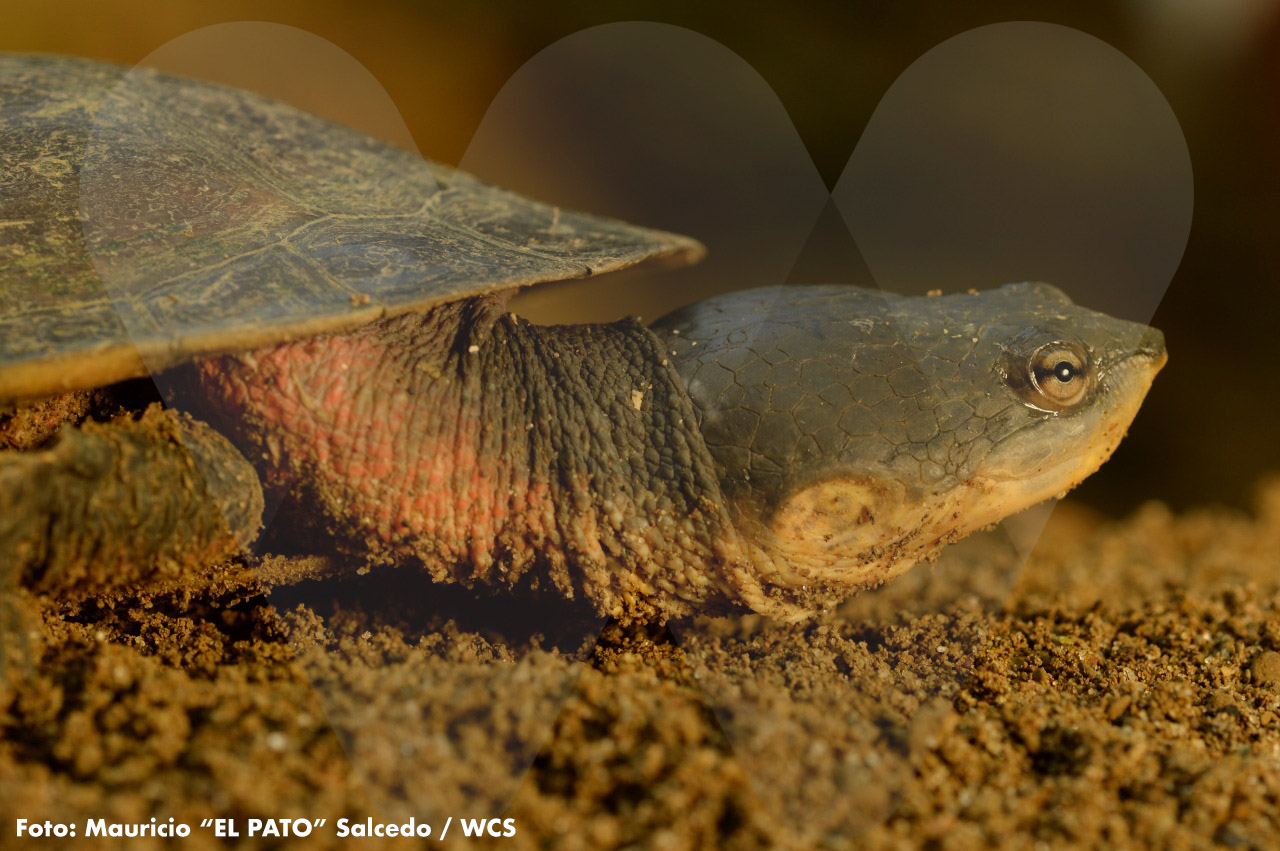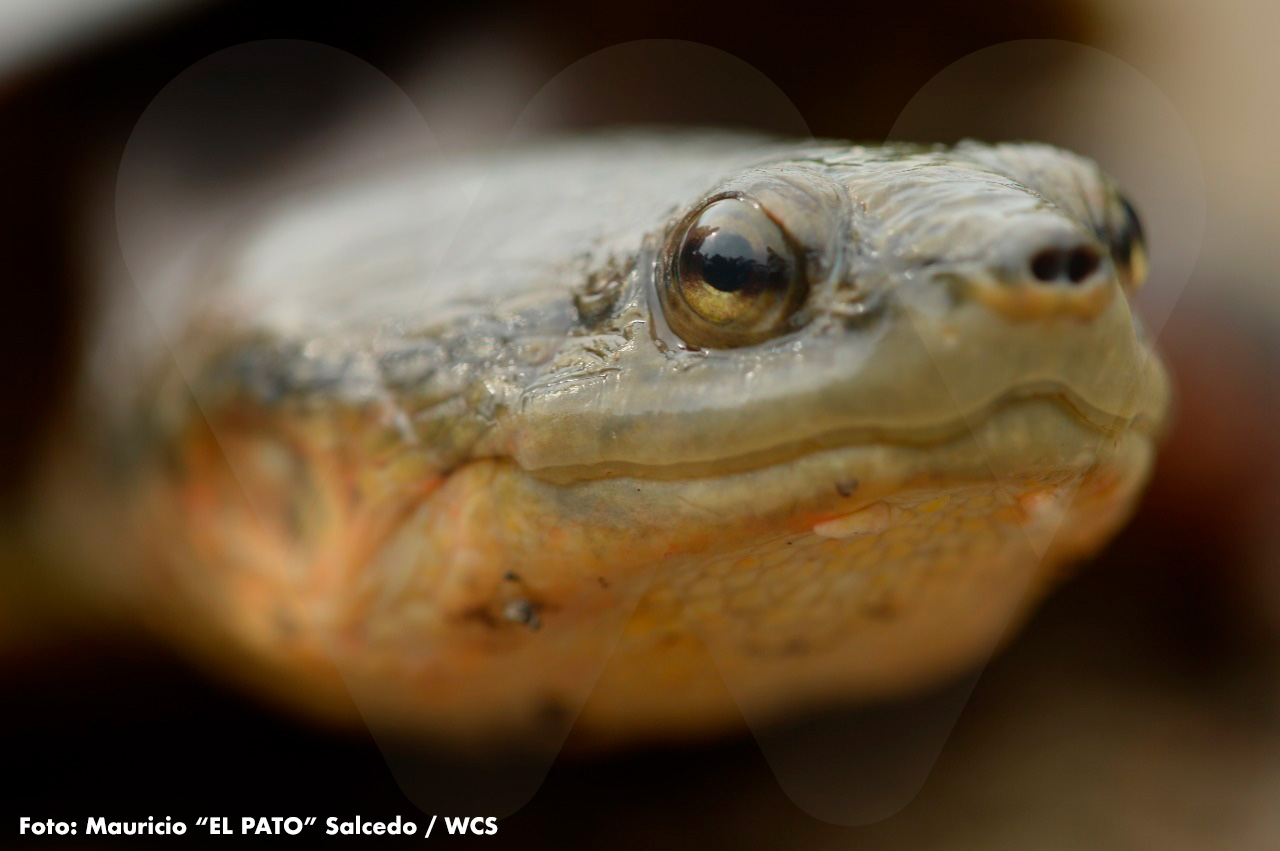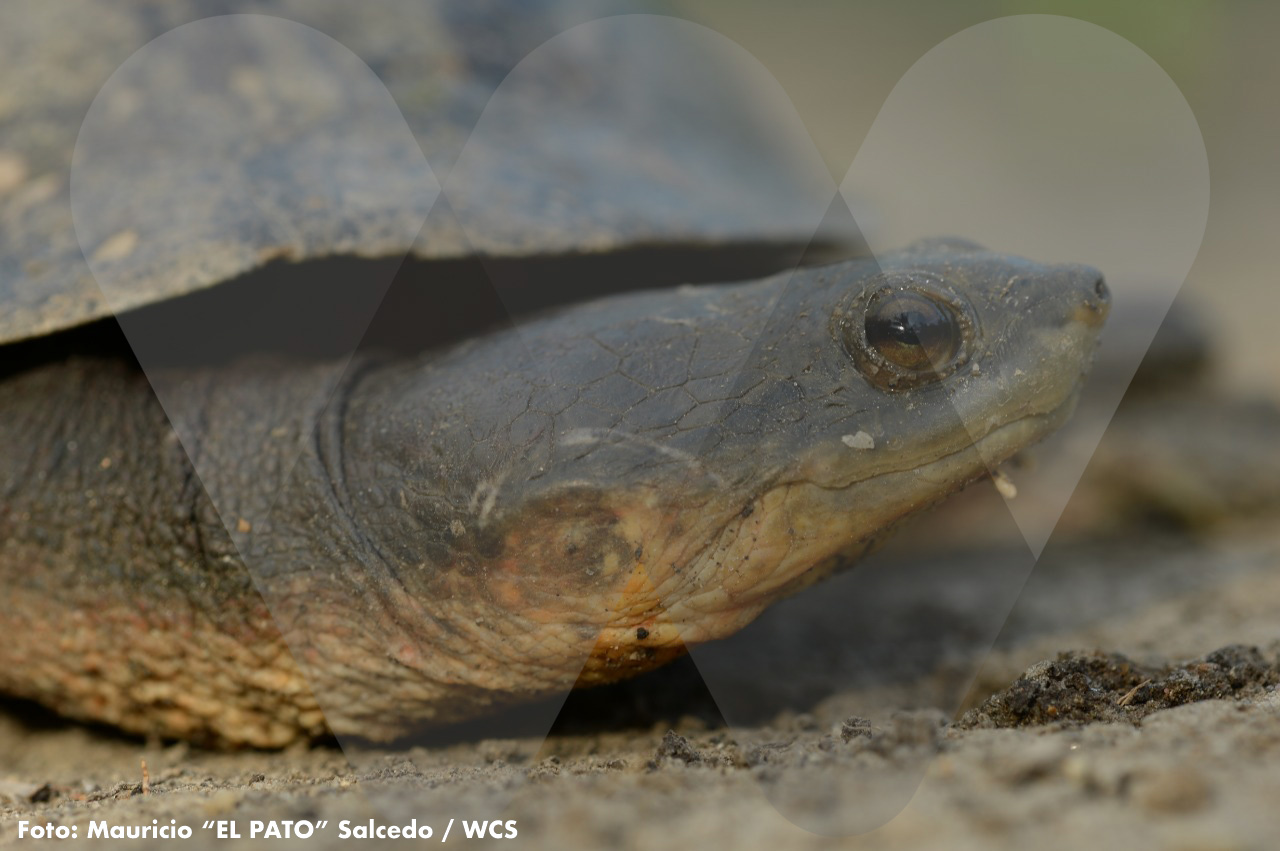Landowners are protecting the surroundings of the San Fernandera-Caracoli stream, one of the few places in the Atlantic Coast where the reptile is still commonly seen. They install fences to prevent livestock from contaminating its waters, they plant trees and avoid hunting and the extraction of sand. But Dahl's toad-headed turtle, one of Colombia's four endemic turtles, is in critical danger of extinction.

It is no secret that, in the twenty-first century, Dahl's toad-headed turtle is not living one of its best moments. The species, which only lives in the Atlantic Coast departments of Colombia (endemic), is in critical danger of extinction due to the destruction of its habitat, the dry forest, chopped down with the advance of livestock farming, agriculture and infrastructure construction.
According to studies on landscape genetics, in which WCS experts participated, among them Natalia Gallego-García, biologist and postdoctoral investigator of the University of California (UCLA) and Germán Forero, Science Director of WCS Colombia, the ecosystem’s fragmentation and damage caused the division and isolation of the reptile’s populations in at least six groups, still surviving in Cesar, Bolívar, Córdoba and Sucre. Consequently, genetic exchange for Dahl’s toad-headed turtle is now rare or non-existent. It has had to reproduce between relatives (inbreeding), which opens many possibilities for the appearance of defective genes that could originate illnesses, physical changes and even the death of the scarce individuals that still survive.
Scientific intervention to mitigate all those damages faced by Mesoclemmys dahli, its scientific name, is still active, with field investigations, but it is now clear that it will not be possible to solve this emergency entirely without the contribution of the communities.
Consequently, WCS Colombia is consolidating agreements with landowners in the Caracolí and Guaraguao settlements, in the rural zone of Chimichagua (Cesar), whereby they will protect these bodies of water and promote the gradual reforestation of some sites, as this is one of the few scenarios where the turtle, apparently, still manages to develop in a healthy fashion.
It hides its head to one side
Germán Forero comments that Dahl's toad-headed turtle was seen in this part of Cesar only about a decade ago. Before that moment, it had only been reported in Sucre, Córdoba and Bolívar.

Its discovery in Chimichagua, municipality located at the edge of the Zapatosa swamp, was possible due to comments of peasants and other settlers who gave clues of its presence, describing it as “a very peculiar turtle that hides its head to one side” (suborder Pleurodira), frequently seen in the San Fernandera-Caracolí stream. Trusting the information, Forero and biologist Guido Fabián Medina Rangel of the Universidad Nacional, went to Chimichagua and were able to certify its presence in this body of water, thus broadening its distribution to this part of the western Atlantic Coast. Interest immediately arose to preserve the turtle and protect this natural scenario.
Reforestation with fruit trees
Ernesto Ome, professional in Productive Initiatives of WCS Colombia, explains that seven landowners are participating, with the determination of improving their environment and that of Dahl's toad-headed turtle. They are located in the two settlements and at the edge of the San Fernandera-Caracolí stream, with predominance of forest zones. The majority have allocated part of their land for conservation. In retribution, they have received advice on water troughs for livestock, water reservoirs and the adaptation of wells and water distribution systems and for the construction of isolation or electric fences that prevent the uncontrolled movement of livestock and the consequent contamination of aquifers. They are keen on preventing the extraction of sand from the bottom of the stream and reducing hunting, as well.
The participants have been involved in the production of organic fertilizers, the construction of vegetable gardens and the planting of fruit trees, for the production of oranges, guavas, soursops, mangoes and zapotes, among others. They have received training in topics related with turtles, such as their environmental importance, the threats they face and their care.
The following farms are among the beneficiaries: Otoniel Leyva (El Olivo), Orlando Palomino (Las Marías), Inés Fragoso (Los Barriales), Cleotilde Palomino (La Belleza), Ronulfo Mena (La Florida), Luis Carlos Cabarcas (Las Peñas) and Edith Mendoza (Los Carruseles).
Forty hectares of land in good condition that support the recovery of the reptile and where traces of tapirs and pumas were reported, have been taken care of with the support of all the beneficiaries.
This environmental and social task started in 2017 and was consolidated in 2019 and during the first months of 2020, before the public health problems produced by Covid 19. The idea is to resume the process and consolidate its actions in what is left of the year.

Work in Chimichagua for the species is not an exception. It is integrated to the creation of the Reserva La Carranchina, a 120 hectare area located in San Benito Abad (Sucre), bought by WCS Colombia in cooperation with Turtle Survival Alliance (TSA) and Rainforest Trust that, little by little, is being transformed into the first place dedicated to the protection of Dahl`s toad-headed turtle and where work is being done for the expansion of wetlands and dry forests to create an adequate space for its defense. It is clear that this area allocated to its protection (In Sucre territory) and the settlements in Chimichagua, in Cesar, are not geographically connected. But the work done in each one will probably start to radiate its effect towards the other coastal regions, where communities can be involved in a sustainable use of their resources and their wild fauna. It is, therefore, not exaggerated to think that, little by little, a better life for Dahl's toad-headed turtle is taking impulse.